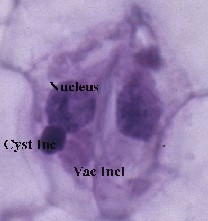The Canadian Light Rail Vehicle was a type of streetcar that was used in Toronto, Canada.
CLRV may also refer to:
- Cherry leaf roll virus, a plant pathogenic virus
- Citrus leaf rugose virus, a plant pathogenic virus
The Canadian Light Rail Vehicle was a type of streetcar that was used in Toronto, Canada.
CLRV may also refer to:
Rosette is the French diminutive of rose. It may refer to:

A leaf spot is a limited, discoloured, diseased area of a leaf that is caused by fungal, bacterial or viral plant diseases, or by injuries from nematodes, insects, environmental factors, toxicity or herbicides. These discoloured spots or lesions often have a centre of necrosis. Symptoms can overlap across causal agents, however differing signs and symptoms of certain pathogens can lead to the diagnosis of the type of leaf spot disease. Prolonged wet and humid conditions promote leaf spot disease and most pathogens are spread by wind, splashing rain or irrigation that carry the disease to other leaves.
Bean pod mottle virus, or BPMV, is a species of plant pathogenic virus in the family Secoviridae. It is known to infect soybean crops.
Bean yellow mosaic virus is a plant pathogenic virus in the genus Potyvirus and the virus family Potyviridae. Like other members of the Potyvirus genus, it is a monopartite strand of positive-sense, single-stranded RNA surrounded by a capsid made for a single viral encoded protein. The virus is a filamentous particle that measures about 750 nm in length. This virus is transmitted by species of aphids and by mechanical inoculation.
Beet leaf curl virus (BLCV) is a plant pathogenic virus of the family Rhabdoviridae.
Carrot red leaf virus (CtRLV) is a plant pathogenic virus of the family Solemoviridae.
Carrot thin leaf virus (CTLV) is a pathogenic plant virus of the family Potyviridae.
Cherry leaf roll virus (CLRV) is a plant pathogenic virus of the subfamily Comovirinae, family Secoviridae, order Picornavirales.
Cherry rasp leaf virus (CRLV) is a plant pathogenic virus of the order Picornavirales, family Secoviridae, genus Cheravirus.
Citrus leaf rugose virus (CLRV) is a plant pathogenic virus of the family Bromoviridae. It infects a wide range of valuable citrus hosts and while its specific vector is unknown, it can be mechanically transmitted to non-citrus hosts.
Tobacco leaf curl viruses (TLCV) are several species of plant pathogenic viruses in the genus Begomovirus.

Tobacco ringspot virus (TRSV) is a plant pathogenic virus in the plant virus family Secoviridae. It is the type species of the genus Nepovirus. Nepoviruses are transmitted between plants by nematodes, thrips, mites, grasshoppers, and flea beetles. TRSV is also easily transmitted by sap inoculation and transmission in seeds has been reported. In recent cases it has also been shown to appear in bees, but no transmission to plants from bees has been noted.

Tobacco streak virus (TSV) is a plant pathogenic virus of the family Bromoviridae, in the genus Ilarvirus. It has a wide host range, with at least 200 susceptible species. TSV is generally more problematic in the tropics or warmer climates. TSV does not generally lead to epidemics, with the exception of sunflowers in India and Australia, and peanuts in India.

Citrus psorosis ophiovirus is a plant pathogenic virus infecting citrus plants worldwide. It is considered the most serious and detrimental virus pathogen of these trees.
PRMV may refer to :
Ringspot, a symptom of various plant viral infections, may refer to:
Commelina mosaic virus (CoMV) is a plant pathogenic virus in the genus Potyvirus and the virus family Potyviridae. Like other members of the Potyvirus genus, CoMV is a monopartite strand of positive-sense, single-stranded RNA surrounded by a capsid made for a single viral encoded protein. The virus is a filamentous particle that measures about 707-808 nm in length. This virus is transmitted by two species of aphids, Myzus persicae and Aphis gossypii, and by mechanical inoculation.
In biology, a pathogen, in the oldest and broadest sense, is any organism or agent that can produce disease. A pathogen may also be referred to as an infectious agent, or simply a germ.
Narcissus yellow stripe potyvirus (NYSV) is a plant pathogenic Potyvirus of the family Potyviridae which infects plants of the genus Narcissus. It is one of the commoner viruses infecting Narcissus, and is transmitted by aphids.
Narcissus tip necrosis virus (NTNV) is a plant pathogenic virus of the family Tombusviridae, which infects plants of the genus Narcissus, the only known host.